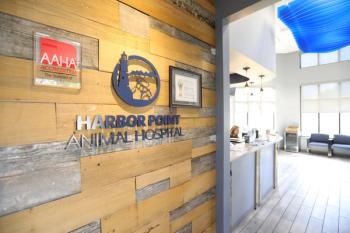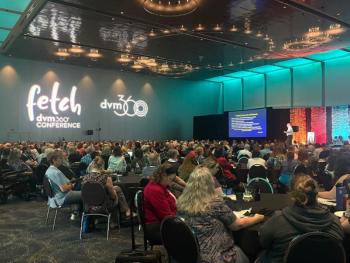
AAHA study identifies compliance gaps
The American Animal Hospital Association compliance study reveals that many veterinarians don't have as high a compliance rate as once thought.
Editor's Note: DVM Newsmagazine would like to thank the American Animal Hospital Association (AAHA), especially executive director Dr. John Albers for sharing the results of the organization's "Compliance in Companion Animal Practices" study for this special issue. The following article contains a brief synoposis of some of the findings.
Table 1. Assumptions Used in Calculating Compliance Gaps
his spring, AAHA completed an in-depth study that examines compliance in companion animal practices. The results of the study dispel some of the misconceptions that many veterinarians believed to be true regarding compliance. While many practitioners thought they have a high rate of compliance with recommendations they make to their clients regarding treatment and care for their pets, the study reveals the level of compliance is significantly lower than what practice teams believed.
Although many veterinarians and their staff judge their level of compliance by "gut feeling," the AAHA study was able to quantify the number of pets that receive less than the best care. AAHA also provides practitioners with useful tools for improving compliance in their practices. For an executive summary of the AAHA compliance study visit
Industrial strength
As part of the study, AAHA developed a module to formulate a preliminary understanding of compliance by analyzing the results of veterinary suppliers' existing research. AAHA obtained a great deal of information from previous studies and the marketing data from a number of companies.
A total of 10 pet food companies, pharmaceutical manufacturers and laboratory test producers provided meaningful data and input. In addition, three of the large national corporate groups shared their experiences, as did the Feline Health Center at Cornell University, the American Association of Feline Practitioners, a large national veterinary laboratory and several independent veterinary consultants. The result of this portion of the study was the calculation of the compliance gap and potential for improvement in compliance levels based on existing data (e.g., the number of dogs and cats that visit a veterinarian annually).
Table 2. Estimates of Compliance Gaps
In addition to the six primary areas of focus, the association also gathered compliance data in the areas of allergy testing and treatment, feline immunodeficiency virus (FIV) testing, keratoconjunctivitis sicca (dry eye) treatment and implantable microchips. The assumptions used in calculating compliance gaps are detailed in Table 1, p. 8.
The study was carried out primarily by Fletcher Spaght, Inc., a Boston consulting firm with prior experience in the veterinary industry. Ethnographic Research, Inc. conducted a portion of the research in the practice diagnostics module, and NFO WorldGroup implemented the pet owner survey. AHHA also consulted with Dr. F. David Schoorman, professor of Organization Behavior and Human Resource Management at Purdue University's Krannert Graduate School of Management. Hill's Pet Nutrition provided funding for the study.
AAHA Compliance Study Facts
- Pet owners said that their veterinarians were highly competent, and veterinarians were their primary source of health care information for their pets.
- Pet owners did not think that veterinarians were motivated by money. Almost 75 percent agreed or completely agreed that their veterinarians made recommendations because they were good for the pet. Less than 10 percent felt that making more money was the reason veterinarians make health care recommendations.
- In general, pet owners felt that communication with their veterinarians and practice staff were good. While 97 percent of pet owners agreed or completely agreed that their veterinarian was good at explaining pet health care and health problems to them, almost 60 percent agreed or completely agreed that their veterinarian or practice did not always make it clear to them how important the heath care recommendations were.
Newsletter
From exam room tips to practice management insights, get trusted veterinary news delivered straight to your inbox—subscribe to dvm360.




